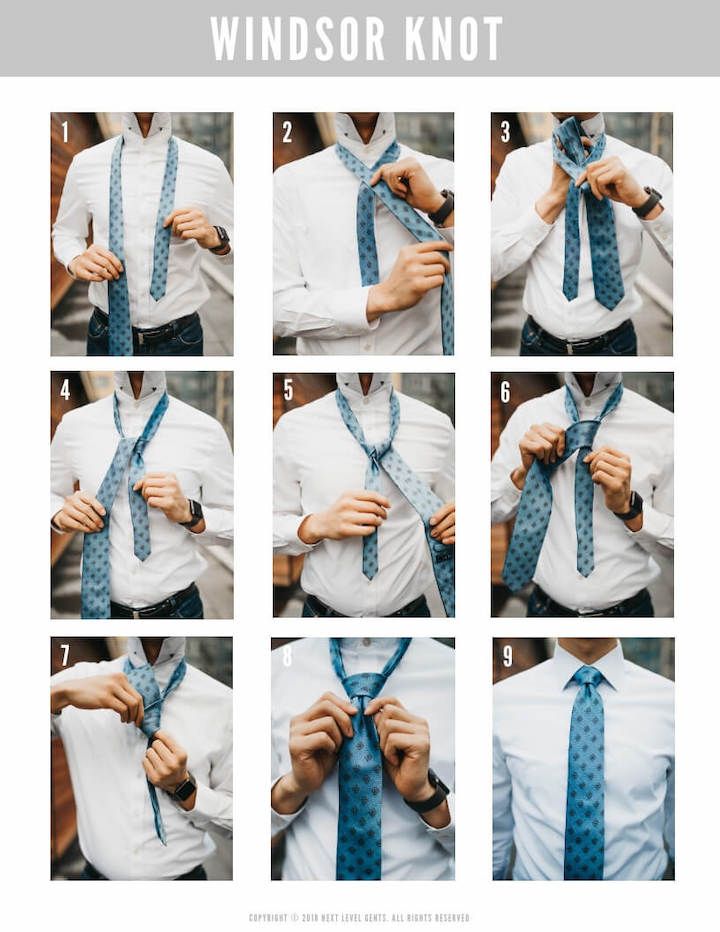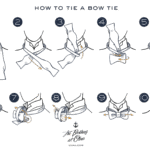The seemingly simple act of tying a tie holds a surprising depth of significance. From boardrooms to weddings, the knot you choose speaks volumes, subtly conveying personality, professionalism, and even confidence. While the ubiquity of casual dress codes in many modern workplaces might lead one to believe the art of tie-tying is fading, its relevance persists. For formal occasions, job interviews, or simply expressing a sense of refined style, mastering this skill remains undeniably valuable. This comprehensive guide delves beyond the basic instructions, exploring the history, the nuances of different knots, and the subtle art of selecting the right tie for the occasion. We’ll move beyond the simple “four-in-hand” and explore a range of knots, their suitability for different collar types and tie fabrics, and even troubleshoot common tying difficulties. This isn’t just a how-to; it’s a journey into the world of neckwear, equipping you with the knowledge and confidence to master this timeless skill and make a statement with your sartorial choices.
Understanding the Fundamentals: Choosing Your Tie and Preparing
Before embarking on the knot-tying process, understanding the basics is crucial. The first step is selecting the right tie. Tie fabric plays a significant role; silk ties offer a luxurious drape and sheen, while wool ties provide a more textured and robust look. Consider the occasion: a silk tie is appropriate for formal events, while a wool or cotton tie might be better suited for a less formal setting. Tie length is equally important; a properly sized tie should reach the belt buckle, neither too short nor excessively long. An overly long tie can look sloppy, while a tie that falls too short appears awkward. Finally, the tie width should complement your build and the overall outfit. Thinner ties generally suit slimmer builds and more modern styles, while wider ties can complement broader builds and more classic attire.

Assessing Your Collar Type
Your collar type significantly influences which tie knot is most suitable. A spread collar, with its wider opening, allows for a variety of knots, including the Windsor and the Half-Windsor. A point collar, with its sharper points, pairs well with a four-in-hand or a Pratt knot. A button-down collar, often seen in more casual shirts, generally works best with simpler knots like the four-in-hand. Choosing the right knot for your collar ensures a clean, polished look.
Understanding Tie Fabric Weights
The weight of your tie fabric affects how easily it knots. Lighter fabrics like silk can be more challenging to tie neatly, requiring a gentler touch. Heavier fabrics, such as wool or linen, might require a bit more firmness in the tying process. Understanding the characteristics of your tie’s material allows for a more refined and controlled knot.
The Four-in-Hand Knot: A Classic Choice
The four-in-hand is arguably the most popular and versatile tie knot. Its slightly asymmetrical shape and relatively quick tying process make it ideal for everyday wear. To tie a four-in-hand knot, start by draping the tie around your neck, with the wide end on your right side and significantly longer than the narrow end. Cross the wide end over the narrow end, then bring it up and through the loop formed around your neck. Next, cross the wide end over the narrow end again, tucking it down through the loop at the front. Finally, tighten the knot by gently pulling on the narrow end and adjusting the knot to sit comfortably at the base of your collar. The four-in-hand is a reliable choice for various occasions and suits most collar types.
Variations and Adaptations
While the basic four-in-hand is straightforward, slight adjustments can be made to customize the knot’s appearance. For instance, by adjusting the tightness of the knot, you can create a slightly more or less symmetrical look. Experimenting with different fabric types and tie lengths can also lead to subtle variations in the final result. Mastering the basic four-in-hand provides a strong foundation for exploring more complex knots.
Troubleshooting Common Four-in-Hand Issues
A common problem with the four-in-hand is an uneven or lopsided knot. This often results from inconsistent tension during the tying process. Ensure you apply even pressure throughout, avoiding pulling too hard on one side. Another issue is a knot that is too loose or too tight. Practice will help you find the right balance, but initially, paying close attention to the tension during each step is crucial. A loose knot will look sloppy, while a knot that is too tight can be uncomfortable.
The Windsor Knot: A Formal and Symmetrical Choice
The Windsor knot is known for its large, symmetrical shape, making it an excellent choice for formal occasions and spread collars. This knot requires a bit more practice than the four-in-hand, but the result is a sophisticated and refined look. Begin with the wide end of the tie on your right, significantly longer than the narrow end. Cross the wide end over the narrow end, then bring it underneath and up through the loop around your neck. Next, cross the wide end over the narrow end again, then bring it down through the loop in front. Finally, tuck the wide end through the knot and tighten gently. The resulting knot is large and symmetrical, perfect for formal settings.
The Half-Windsor Knot: A Balanced Alternative
The Half-Windsor knot is a midway point between the four-in-hand and the full Windsor. It offers a balanced look that is less bulky than the Windsor but more refined than the four-in-hand. It’s a versatile option suitable for a range of occasions and collar types. The technique is similar to the full Windsor, but with one less crossing of the wide end over the narrow end. This slight simplification results in a more streamlined, less bulky knot.
Comparing Windsor and Half-Windsor Knots
| Knot | Size | Symmetry | Suitability |
|---|---|---|---|
| Full Windsor | Large | High | Formal occasions, spread collars |
| Half-Windsor | Medium | Medium | Semi-formal occasions, point or spread collars |
Beyond the Basics: Exploring Other Tie Knots
While the four-in-hand and Windsor knots are staples, the world of tie knots extends far beyond these two. The Pratt knot, for instance, is a visually appealing knot that is slightly more complex than the four-in-hand but offers a unique and refined look. The Shelby knot, known for its small size, is best suited for slimmer ties and narrow collars. The Kelvin knot is a more intricate knot that creates a stylish and complex look, perfect for those who want to make a bolder statement. Experimenting with different knots allows you to express your personal style and adapt to different occasions.
Choosing the Right Knot for the Occasion
The choice of tie knot should always be considered in relation to the occasion and the overall outfit. A formal event calls for a more structured knot like the Windsor or Half-Windsor, while a less formal setting might be better suited to a simpler knot like the four-in-hand or Pratt. Consider the fabric of your tie, the style of your shirt collar, and the overall tone of the event when making your selection.
Advanced Knots and Their Applications
More advanced knots, such as the Eldredge or the Nicky, require significant practice but offer unique and visually striking results. These knots are best suited for experienced tie wearers and can add a touch of sophistication to a formal outfit. However, these knots are generally more difficult to master and may not be suitable for everyday wear.
Summary and Recap
Tying a tie is more than just a practical skill; it’s an art form that allows for self-expression and the projection of a specific image. This guide has explored the fundamental aspects of tie selection, preparation, and the techniques for tying various knots. We began with the basics, emphasizing the importance of choosing the right tie for the occasion, considering factors such as fabric, length, and width. We then delved into the intricacies of tying the four-in-hand, a versatile knot suitable for everyday wear, and the Windsor knot, a more formal choice ideal for significant occasions. Furthermore, we examined the Half-Windsor as a balanced alternative, and explored other knot options such as the Pratt, Shelby, Kelvin, Eldredge, and Nicky knots. Ultimately, mastering the art of tying a tie involves practice, patience, and an understanding of the nuances involved in creating a well-balanced and stylish look.
- Tie Selection: Consider fabric, length, and width.
- Collar Type: Match the knot to your collar (spread, point, button-down).
- Four-in-Hand Knot: Versatile, easy to tie, suitable for most occasions.
- Windsor Knot: Formal, symmetrical, ideal for spread collars.
- Half-Windsor Knot: A balanced alternative to the full Windsor.
- Other Knots: Explore options like Pratt, Shelby, Kelvin, Eldredge, and Nicky for variety.
Frequently Asked Questions (FAQs)
How do I prevent my tie from slipping?
A slipping tie often indicates an improperly tied knot or a tie that is too short. Ensure you’ve tightened the knot securely and that the tie reaches your belt buckle. Using a tie bar can also help to keep the knot in place and prevent slippage.
What type of tie is best for a job interview?
For a job interview, a solid-colored silk tie in a conservative color like navy blue, dark gray, or burgundy is generally recommended. A simple knot like the four-in-hand or half-Windsor is appropriate. Avoid overly flashy patterns or colors.
How do I care for my ties?
Proper tie care is essential for maintaining their appearance and longevity. Avoid machine washing; instead, hand-wash or dry-clean as needed. Store your ties loosely rolled or hung to prevent creasing. Avoid exposing them to direct sunlight or excessive heat.
What if I can’t seem to tie the knot correctly?
Practice makes perfect! Don’t be discouraged if you don’t get it right away. Watch videos, refer to diagrams, and keep practicing until you develop the muscle memory needed to tie the knot smoothly and efficiently. Consider starting with simpler knots like the four-in-hand before moving on to more complex ones.
Can I use a tie-tying tool?
Yes, tie-tying tools are available to assist those who find it difficult to tie a tie manually. While they offer a quick solution, mastering the manual process is generally recommended for greater versatility and confidence in various situations.



